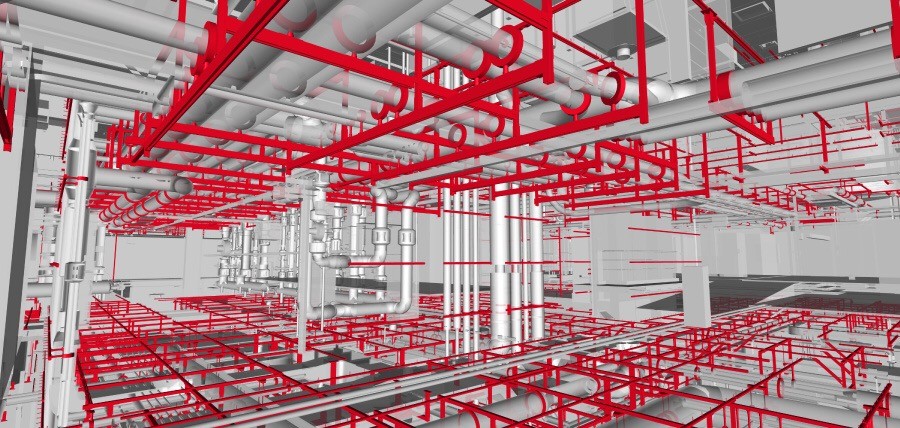
E&M Integrated Support System ISS

While comparing with 10 years ago, BIM adoption rate in Hong Kong is becoming higher and thanks to the great improvement in computer calculation speed and cloud platform stability, higher adoption rate would be also expected in near future.
As BIM is a powerful tool for construction, it helps all the project stakeholders having a better visibility, transparency and earlier planning during construction. Therefore, if some essential part of the projects can be prefabricated and assembled in plant prior to delivery, the working time would be greatly reduced and hence productivity can be enhanced.
Prefabrication technology is extensively adopted in façade construction for example in public housing and private residential development, however, can we further expand the scope and applications for prefabrication technology?
E&M is an essential part in construction project and the investment for E&M installation in a project always plays an important part. E&M works are not only setting up pipes and ensuring the functionality of services but also need to make proper arrangement on pipes and duct running and put them in a good order. Effective pipe and duct distribution or so called “Integrated Support System, ISS” can facilitate energy saving, higher utilization of space and better appearance inside the building.
Effective pipe and duct distribution or so-called hanger management would also help on cost saving and worker safety. Imagine that without a good hanger system design, contractors between different trades will work as an “ad-hoc” coordination and fighting for space and priority can be expected. Also, a lot of clashes and error would be induced by “ad-hoc” coordination. More co-ordination work would lead to duplication of works and more drilling on the ceiling and hence increase the working time at height and workers are exposed in a condition of higher risk of falling from height.
A good hanger system design always need early participation of designer even in conceptual stage. BIM model would greatly help on it as the designer can always visualize the system by 3D model and he/she can easily identify the clashes between services from the model and fix it ASAP.
The second step is the fabrication stage. Once the BIM model for the ISS is confirmed, the drawings can be sent to the plant for preassembly. During this process, products with high flexibility such as adjustable nuts and channel are preferred since some minor adjustment would be necessary in the jobsite. Once the preassembly is finished, all the components can be delivered to jobsite and direct mounting onto ceiling is possible. 
The manufacturer of the ISS should have flexible component for jobsite tuning and also sophisticated BIM / CAD library from the manufacturer is needed for early BIM design. Moreover the mechanical properties such as max. allowable load of the channels and accessories and deflection limit for different span are also required for the purpose of design safety and documentation in future. 

In a nutshell, properly use the BIM model with good ISS supplier and early preassembly would greatly reduce the time on clashes finding, coordination and reinstall of services. For more information please contact Hilti representative and we can provide you with more technical advises on BIM and ISS design.
